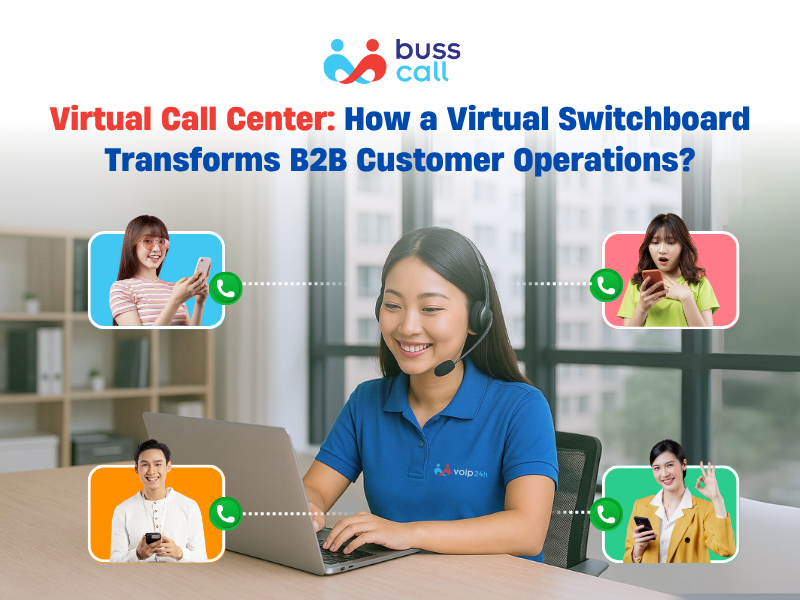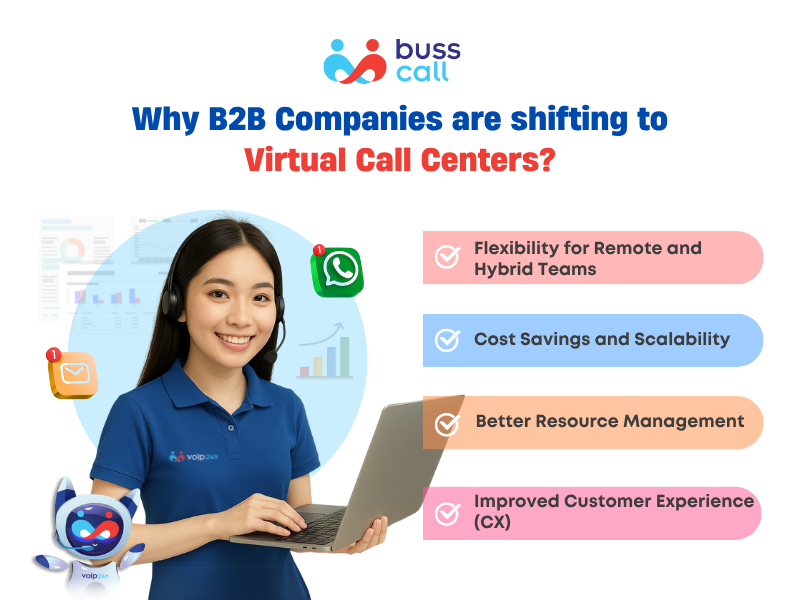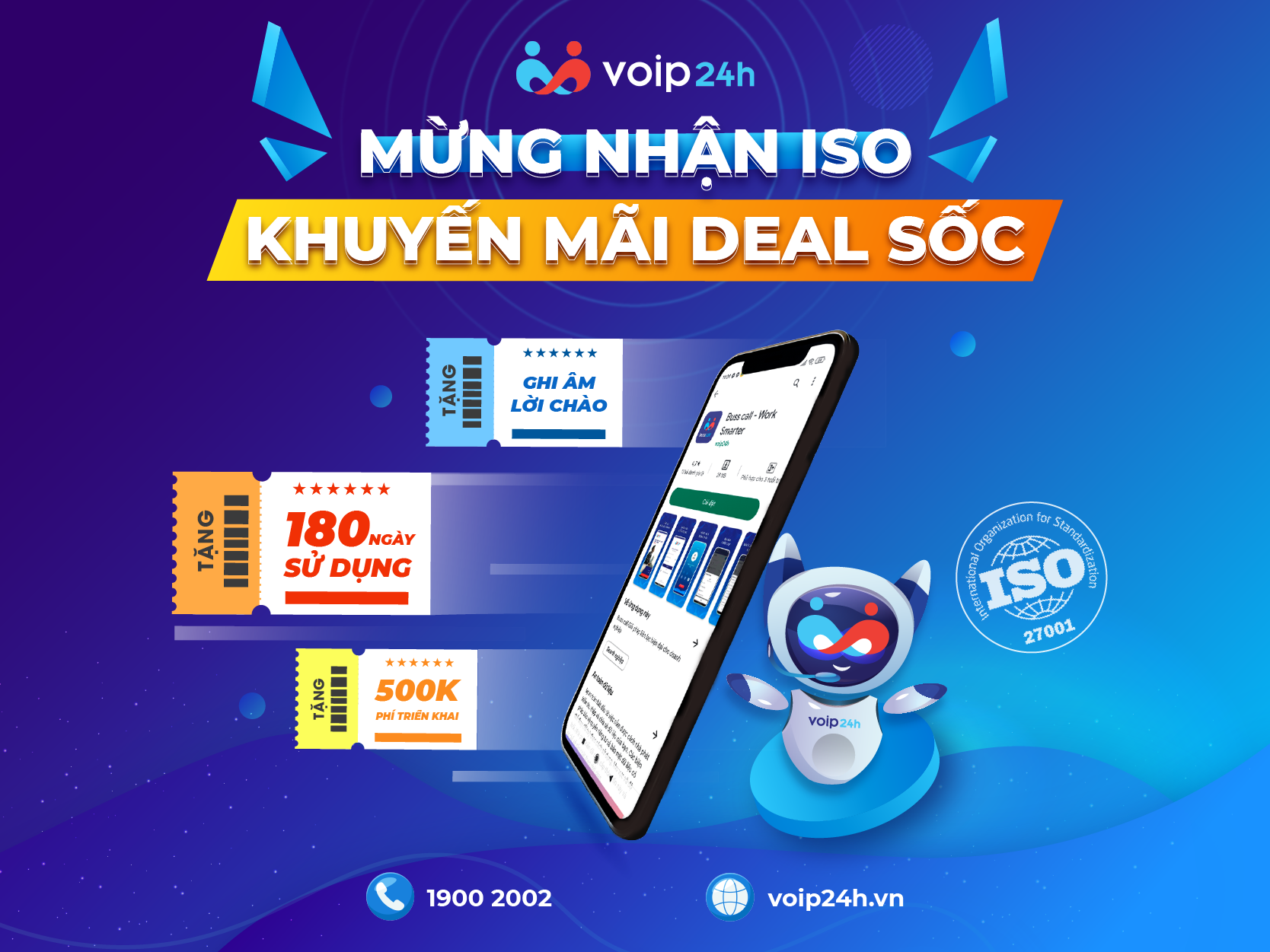
In today’s fast-paced B2B landscape, customer experience can make or break a deal. Whether you’re supporting hundreds of inbound customer queries or managing outbound sales campaigns, having the right communication tools is essential. That’s where virtual call centers come into play, offering businesses a modern, cloud-based solution to manage calls efficiently, no matter where their teams are located.
In this article, we’ll explore what a virtual call center is, why B2B companies are shifting to virtual setups, and how a virtual switchboard is the backbone of this transformation.
Mục lục
- 1 What is a Virtual Call Center?
- 2 Why are B2B Companies shifting to Virtual Call Centers?
- 3 The Role of a Virtual Switchboard in Virtual Call Centers
- 4 Key benefits for B2B Operations
- 5 How to choose the Right Virtual Switchboard for Your Virtual Call Center?
- 6 Buss Call – Multichannel Virtual Switchboard for Seamless Customer Engagement
- 7 Conclusion: upgrade your B2B call operations
What is a Virtual Call Center?
A virtual call center is a cloud-based system that allows customer service agents, sales teams, or support staff to handle calls from anywhere – without being tied to a physical office or on-premise infrastructure. Instead of using traditional desk phones and PBX systems, agents connect through the internet, using softphones or mobile devices integrated with the company’s systems.
For B2B companies, this model offers the flexibility to scale operations, manage remote teams, and provide consistent customer service across regions and time zones.
At the heart of a virtual call center is the virtual switchboard, which handles intelligent call routing, IVR menus, and integration with other platforms like CRM or helpdesk systems.
Why are B2B Companies shifting to Virtual Call Centers?

The shift toward virtual call centers isn’t just a passing trend – it’s a strategic move driven by several key advantages:
- Flexibility for Remote and Hybrid Teams: B2B businesses often work with distributed teams or external partners. A virtual setup allows agents to log in from anywhere, ensuring uninterrupted service.
- Cost Savings and Scalability: By eliminating the need for expensive hardware and office space, companies can significantly cut operational costs. Plus, scaling up or down is as simple as adjusting software licenses – no need for physical expansion.
- Better Resource Management: Virtual call centers allow managers to assign the right agents to the right tasks in real time, based on call volume, agent skills, or customer needs.
- Improved Customer Experience (CX): With features like call queue management, IVR, and integration with customer databases, customers get faster, more personalized support.
The Role of a Virtual Switchboard in Virtual Call Centers
A virtual switchboard is the control center of your virtual call center. It’s the software that directs incoming and outgoing calls, ensures the right agent handles each interaction, and keeps the entire operation running smoothly.
Here’s what a virtual switchboard does for B2B companies:
- Centralized Call Management: All incoming and outgoing calls are handled through a single, unified platform, reducing complexity and ensuring consistency.
- Intelligent Call Routing: Advanced rules ensure calls are directed to the right department, agent, or queue — whether it’s based on time of day, language, or customer type.
- Interactive Voice Response (IVR): Automated menus help customers self-serve or get routed efficiently, cutting down on wait times.
- Integration with CRM and Helpdesk Systems: Your agents can see customer histories, open tickets, and sales opportunities — all within the call interface — making conversations smarter and more effective.
- Real-time Reporting and Analytics: Track key metrics like average handling time, first-call resolution, and agent performance to drive continuous improvement.
Key benefits for B2B Operations
For B2B companies, the combination of a virtual call center and a virtual switchboard delivers measurable business benefits:
- Faster Customer Response Times: With smart routing and streamlined workflows, customers get answers quickly, improving satisfaction and retention.
- Improved Agent Productivity: Agents spend less time navigating systems and more time engaging with customers meaningfully.
- Data-driven Decision Making: Built-in analytics help managers identify performance trends, optimize staffing, and uncover customer insights.
- Global Reach, Local Service: Support customers across multiple regions with local numbers, time-zone-based routing, and multilingual options – all from a single platform.
How to choose the Right Virtual Switchboard for Your Virtual Call Center?

Not all virtual switchboards are created equal. Here’s what B2B companies should look for when evaluating solutions:
- Must-have Features: Look for tools like advanced IVR, call queue management, call recording, and real-time reporting.
- Seamless Integrations: Make sure the switchboard integrates smoothly with your existing CRM, ERP, or helpdesk platforms.
- Security and Compliance: In B2B, protecting customer data is critical. Choose a provider that offers encryption, role-based access, and compliance with relevant regulations (like GDPR or HIPAA if applicable).
- Scalability and Customization: Your business will grow – your virtual switchboard should grow with you. Check if the solution offers flexible pricing, modular add-ons, and customization options.
- Strong Vendor Support: B2B relationships depend on reliability. Choose a vendor known for excellent technical support, service-level agreements (SLAs), and ongoing innovation.
Buss Call – Multichannel Virtual Switchboard for Seamless Customer Engagement

Deliver a Consistent, Unified Customer Experience
Buss Call brings together all your popular communication channels – voice calls, live chat, email, SMS, Facebook, and Zalo – into a single, easy-to-use interface. Your employees can conveniently manage all customer interactions on one platform, making their work simpler, faster, and more efficient. No more jumping between apps or missing messages; everything is unified for maximum productivity.
Empower Remote Sales Teams Anywhere, Anytime
With Buss Call’s applications available on both PC and smartphones (iOS/Android), your sales teams can stay connected with customers anytime, anywhere — as long as there’s an internet connection. Whether they’re working remotely, traveling, or meeting clients off-site, your staff can handle calls and interactions seamlessly, ensuring no opportunity is missed.
Monitor and Evaluate Employee Performance with Ease
Buss Call equips managers with powerful monitoring tools:
- Track total calls, incoming and outgoing
- Access call recordings for quality review
- Evaluate employee performance and identify areas for improvement
By listening to real customer conversations, you can refine training, improve the sales pitch, and enhance the overall customer experience.
Automate Customer Care, Sales, and Marketing
Boost business efficiency and optimize costs by leveraging Buss Call’s automation features:
- Create and manage campaigns like Auto Call, SMS Brandname, Voice Brandname, and Zalo Notification Service (ZNS)
- Send personalized, bulk messages tailored to specific customer lists
- Automate routine outreach, freeing up your team for higher-value tasks
With Buss Call, you can effortlessly run automated sales, marketing, and customer care campaigns that deliver results.
Conclusion: upgrade your B2B call operations
In today’s highly competitive B2B landscape, enhancing customer experience is no longer an option – it’s a critical necessity. A solution like Buss Call not only enables multi-channel connections and supports remote sales teams, but also helps manage, measure, and automate customer care, sales, and marketing campaigns effectively. If you’re a B2B business looking to upgrade your call operations, don’t just think about handling calls – think about a comprehensive, intelligent, and scalable system that optimizes every customer touchpoint and positions you ahead of the competition.





